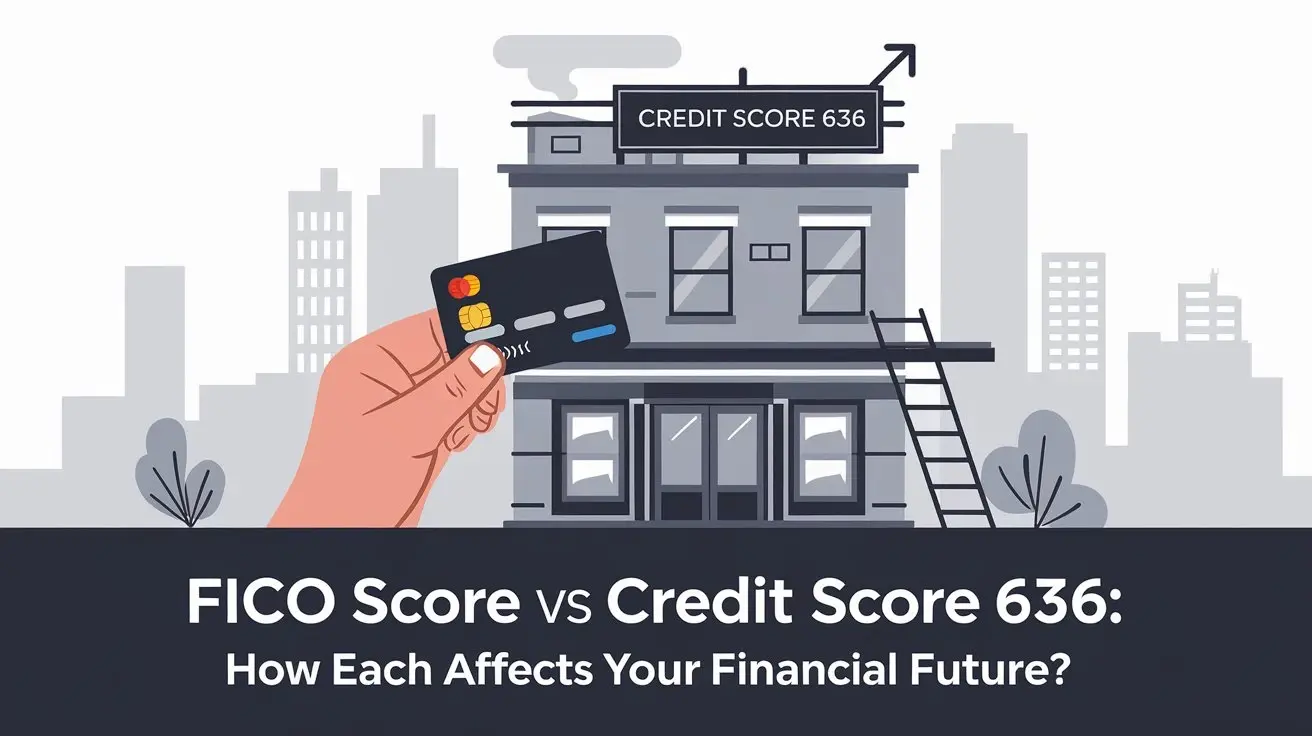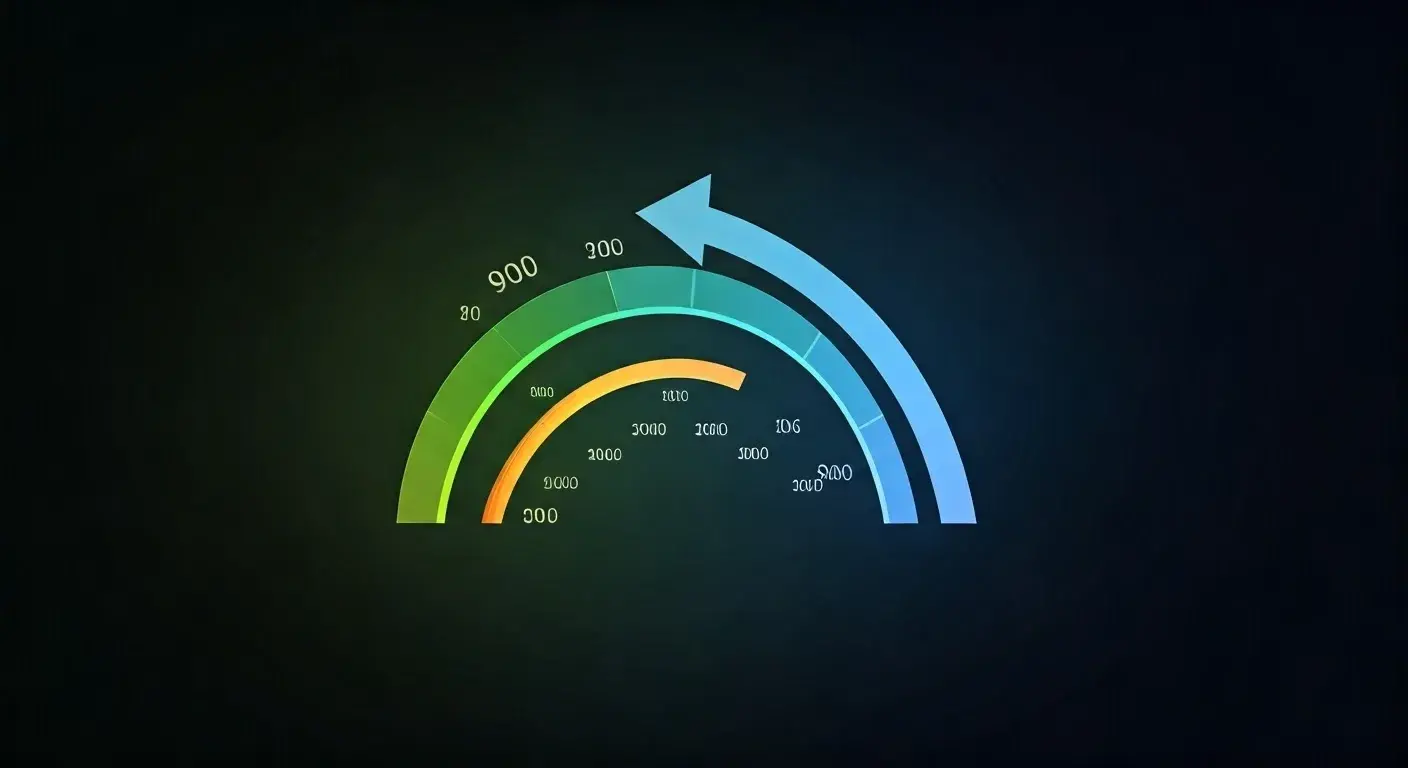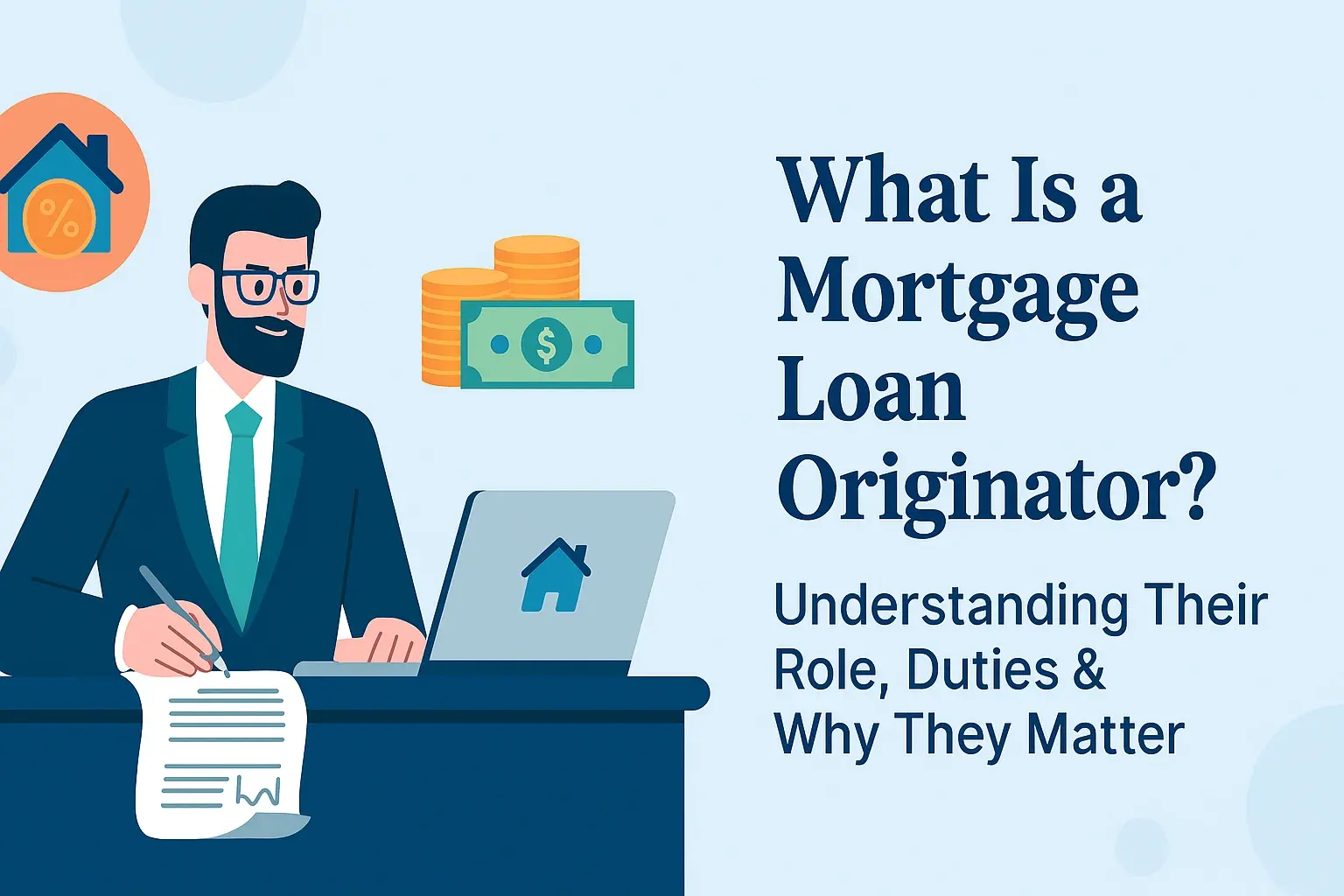-
Posted on: 25 Nov 2024

-
Understanding the nuances between your FICO Score and your general credit score is crucial, especially when navigating a score like 636. This article clarifies their differences, explains how each impacts your financial future, and provides actionable insights for improvement in 2025.
Understanding Credit Scores vs. FICO Scores
In the realm of personal finance, the terms "credit score" and "FICO Score" are often used interchangeably. While closely related, they are not identical. A credit score is a numerical representation of your creditworthiness, summarizing your credit history into a single number. The FICO Score, on the other hand, is a specific type of credit score developed by the Fair Isaac Corporation. It's the most widely used scoring model by lenders in the United States. Think of "credit score" as the general category, and "FICO Score" as a prominent brand within that category. Many other credit scoring models exist, such as VantageScore, but FICO remains the dominant player, influencing decisions on loans, credit cards, and even insurance.
The 636 Score Explained: Where Do You Stand?
A credit score of 636 generally falls into the "fair" or "average" credit range. This means that while you're not in the "poor" or "bad" credit territory, you're also not yet in the "good" or "excellent" categories. For lenders, a 636 score indicates a moderate level of risk. You've likely demonstrated some positive credit habits, but there might be areas needing improvement, such as late payments, high credit utilization, or a short credit history. This score can impact your ability to secure the best interest rates and terms on financial products. For instance, securing a mortgage or a prime credit card might be more challenging with a 636 score compared to someone with a score in the high 700s. However, it's a score that is definitely improvable with focused effort and responsible financial management.
FICO Score: The Industry Standard
The FICO Score is the most prevalent credit scoring model used by lenders. Developed by the Fair Isaac Corporation, it's a proprietary algorithm that analyzes your credit report data to predict your likelihood of repaying borrowed money. Lenders rely heavily on FICO Scores because they are designed to be predictive and consistent across different credit products and institutions. Understanding the FICO Score is paramount for anyone seeking to improve their financial standing and access better credit opportunities. Its widespread adoption means that improving your FICO Score is often the most direct path to better financial terms.
How FICO Scores Are Calculated
The FICO Score model considers five key categories of information from your credit report. While the exact weighting can vary slightly between FICO Score versions, the general components remain consistent. These factors are weighted to reflect their impact on credit risk:
- Payment History (35%): This is the most critical factor. It reflects whether you pay your bills on time. Late payments, defaults, bankruptcies, and collections significantly hurt your score.
- Amounts Owed (30%): This category looks at how much debt you carry, particularly in relation to your total available credit. High credit utilization ratios (using a large percentage of your available credit) can negatively impact your score.
- Length of Credit History (15%): A longer credit history generally leads to a higher score. This includes the age of your oldest account, the age of your newest account, and the average age of all your accounts.
- Credit Mix (10%): This factor considers the different types of credit you manage, such as credit cards, installment loans (like mortgages or auto loans), and finance company accounts. A mix of credit types can be beneficial, but it's less important than payment history and amounts owed.
- New Credit (10%): This category looks at how recently you've opened new accounts and how many hard inquiries you have. Opening too many new accounts in a short period can suggest increased risk.
It's important to note that FICO Scores are calculated based on the information in your credit reports from the three major credit bureaus: Equifax, Experian, and TransUnion. Discrepancies in these reports can lead to different FICO Scores, underscoring the importance of regularly reviewing your credit reports.
FICO Score Ranges and Implications (2025)
FICO Scores typically range from 300 to 850. The interpretation of these scores can evolve slightly with market conditions and lender policies. Here's a general breakdown of FICO Score ranges and their implications for 2025:
FICO Score Range Credit Quality General Implications for 2025 800-850 Exceptional Best interest rates, highest credit limits, easiest approvals. 740-799 Very Good Excellent approval odds, competitive interest rates, good credit limits. 670-739 Good Likely to be approved for most credit products, good interest rates, but not always the absolute best. 580-669 Fair Approval may be more difficult, higher interest rates, lower credit limits, potential for secured credit cards or loans. 300-579 Poor Significant difficulty obtaining credit, very high interest rates, requires secured options or credit-building programs. A FICO Score of 636 falls squarely within the "Fair" category. This means that while you can likely still obtain credit, you will probably face higher interest rates and more stringent terms than individuals with higher scores. Lenders may also require a larger down payment or a co-signer. For example, the average interest rate for a 30-year fixed-rate mortgage in early 2025 might be around 6.5% for someone with an excellent score, but could be upwards of 8% or more for someone with a 636 FICO Score. This difference can translate to tens of thousands of dollars in extra interest paid over the life of the loan.
Credit Score: The Broader Picture
While FICO Scores are the most common, it's important to understand that "credit score" is a broader term encompassing various scoring models. These models share the common goal of assessing credit risk but may differ in their algorithms, data sources, and the specific factors they emphasize. Lenders may use different scoring models depending on the type of credit product they are offering.
Types of Credit Scores
The two primary types of credit scores used in the U.S. are FICO Scores and VantageScore. Each has multiple versions, and different lenders may use different ones. For example:
- FICO Scores: As discussed, these are the most widely used. There are many versions, including FICO Score 8, FICO Score 9, FICO Score 10, and industry-specific versions (e.g., FICO Auto Score, FICO Bankcard Score).
- VantageScore: This is a competing credit scoring model developed collaboratively by the three major credit bureaus (Equifax, Experian, and TransUnion). It also has several versions (e.g., VantageScore 3.0, VantageScore 4.0). While gaining traction, it's still less prevalent than FICO for many lending decisions.
Beyond these major models, lenders might use proprietary scoring systems that incorporate additional data points. However, the core principles of assessing creditworthiness remain similar across most models. The key takeaway is that while your FICO Score is a specific, highly influential number, your overall "credit score" can refer to any of these numerical representations of your credit health.
Credit Score Ranges and Implications (2025)
VantageScore uses a similar range to FICO (501-850 for VantageScore 3.0 and 4.0), with slightly different category names. However, the general implications for a score around 636 remain consistent across most models:
VantageScore Range Credit Quality General Implications for 2025 781-850 Excellent Best rates and terms. 721-780 Good Favorable rates and terms. 661-720 Fair Moderate approval odds, potentially higher rates. 501-660 Poor Difficult approval, high rates, limited options. A score of 636, whether it's a FICO Score or a VantageScore, places you in a challenging but not insurmountable position. It signifies that your credit history has some negative marks or lacks sufficient positive history to be considered "good." Lenders will view you as a higher risk, leading to less favorable terms for loans and credit cards. For instance, a credit card with a 636 score might come with a high annual percentage rate (APR), a low credit limit, and potentially an annual fee. Understanding these implications is the first step toward improving your score and unlocking better financial opportunities.
FICO Score vs. Credit Score 636: A Direct Comparison
When we talk about a "credit score of 636," it's often implied that this is a FICO Score, given its prevalence. However, it's essential to recognize the distinction. If your FICO Score is 636, it means that the specific FICO algorithm has assessed your credit report and determined your creditworthiness to be in the "fair" range. If another model (like VantageScore) gives you a score of 636, it's still in the "fair" or even "poor" category depending on the specific model's ranges. The critical point is that a 636 score, regardless of the model, signals to lenders that there are areas in your credit history that need improvement. It suggests a higher risk of default compared to individuals with scores above 700. This score can affect your ability to get approved for a new car loan, a mortgage, or even a competitive credit card. For example, a lender might approve a loan for someone with a 720 FICO score at 6.5% APR, while denying the same loan to someone with a 636 FICO score, or offering it at 9.5% APR. The difference in interest paid over the loan term can be substantial.
The impact of a 636 score is not uniform. Different lenders and different credit products will have varying "cut-off" scores for approval and for determining interest rates. Some lenders might consider a 636 score acceptable for certain products, albeit with higher costs. Others might deem it too risky. Therefore, while 636 is a general indicator of fair credit, its precise implications depend on the specific scoring model used and the lender's risk tolerance. The key is that both FICO and other credit scores aim to provide a snapshot of your credit risk, and a 636 score, in any common model, indicates a need for attention.
How Each Affects Your Financial Future
Your credit score, and specifically your FICO Score, plays a pivotal role in shaping your financial future. It's not just about getting approved for a credit card; it influences major life decisions and ongoing expenses. A score of 636 can present several challenges and opportunities for improvement.
Loan Approvals and Interest Rates
This is arguably the most significant impact. When you apply for loans—mortgages, auto loans, personal loans—lenders use your credit score to assess risk. A 636 score means you're more likely to be approved for loans than someone with a very low score, but you'll almost certainly pay more in interest. For a 30-year mortgage, a difference of 1-2 percentage points in interest rate can mean paying tens of thousands of dollars more over the loan's life. For an auto loan, a higher rate on a 60-month term can add hundreds or even thousands of dollars to the total cost. In 2025, with fluctuating interest rate environments, a good credit score becomes even more critical to lock in favorable terms.
Example: Two individuals apply for a $25,000 auto loan for 60 months.
- Individual A (740 FICO Score): Approved at 6.0% APR. Monthly payment: ~$483. Total paid: ~$28,980.
- Individual B (636 FICO Score): Approved at 9.5% APR. Monthly payment: ~$526. Total paid: ~$31,560.
The difference in total cost is $2,580, solely due to the credit score. For larger loans like mortgages, the difference is amplified significantly.
Credit Card Opportunities
Your credit score dictates the types of credit cards you can qualify for. With a 636 score, you'll likely be limited to "fair credit" or "subprime" credit cards. These often come with:
- Higher APRs: Often 20% or more, making carrying a balance very expensive.
- Lower Credit Limits: Starting limits might be $300-$1,000, limiting your purchasing power.
- Annual Fees: Some cards may charge an annual fee, further increasing the cost of credit.
- Secured Cards: You might need to put down a security deposit, which then becomes your credit limit.
While these cards can be tools for rebuilding credit, they are not ideal for long-term use due to their high costs. Improving your score opens doors to rewards cards, 0% introductory APR offers, and higher credit limits.
Rental Applications and Utilities
Landlords often check credit scores as part of the rental application process. A score of 636 might be acceptable to some landlords, but others may have higher minimum requirements (e.g., 700+). If accepted, you might be asked for a larger security deposit or a co-signer. Similarly, utility companies (electricity, gas, water, internet, mobile phone) may check your credit. A low score could mean you're required to pay a security deposit to establish service, which you typically get back after a period of on-time payments.
Insurance Premiums
In many states, insurance companies (auto, homeowners) use credit-based insurance scores as a factor in determining premiums. Studies have shown a correlation between credit behavior and the likelihood of filing insurance claims. A lower credit score like 636 can lead to higher insurance premiums. While not always the case, and some states prohibit this practice, it's a factor to consider. Improving your credit score could potentially lead to savings on your insurance policies.
Employment Opportunities
Certain employers, particularly those in finance, government, or positions requiring handling of sensitive information or assets, may review a candidate's credit report as part of a background check. While they typically cannot see your credit score, they can see negative credit events like bankruptcies or collections. A pattern of financial irresponsibility indicated by your credit report could be a red flag, potentially impacting your chances of getting hired or promoted. This is less common than other impacts but remains a possibility in specific industries.
Strategies to Improve Your 636 Score
Improving a 636 credit score requires a strategic and consistent approach. Focusing on the key factors that influence credit scoring models will yield the best results. Here are actionable steps you can take in 2025:
Payment History is Paramount
Action: Pay all your bills on time, every time. This includes credit cards, loans, rent (if reported), and any other recurring payments. Even one late payment can significantly drop your score.
Strategy:
- Set up automatic payments for at least the minimum amount due on all accounts.
- Use calendar reminders a few days before the due date.
- If you've missed a payment, contact the lender immediately to see if you can arrange a payment plan or have the late fee waived.
Why it matters: Payment history accounts for about 35% of your FICO Score, making it the most influential factor. Consistently paying on time demonstrates reliability to lenders.
Credit Utilization Matters
Action: Keep your credit utilization ratio (CUR) low. This is the amount of credit you're using compared to your total available credit. Aim for below 30%, and ideally below 10%.
Strategy:
- Pay down balances on your credit cards.
- If you have multiple cards, focus on paying down the one with the highest utilization first (debt snowball or avalanche method).
- Avoid maxing out credit cards.
- Consider asking for a credit limit increase on existing cards (if you can resist the temptation to spend more). This can lower your CUR if your spending remains the same.
Why it matters: Amounts owed contribute about 30% to your FICO Score. High utilization suggests you might be overextended and at a higher risk of default.
Example: You have a credit card with a $1,000 limit and a $700 balance. Your utilization is 70%. If you pay it down to $300, your utilization drops to 30%, which is much better for your score.
Length of Credit History
Action: Avoid closing old, unused credit accounts, especially if they have no annual fee. Maintain positive activity on them.
Strategy:
- Use an old credit card for a small, recurring purchase (like a streaming service) and pay it off immediately each month. This keeps the account active.
- Focus on building a longer history with responsible behavior.
Why it matters: The length of your credit history accounts for about 15% of your score. A longer history generally indicates more experience managing credit.
Credit Mix and New Credit
Action: Be cautious about opening too many new credit accounts at once. Consider diversifying your credit types over time, but prioritize the other factors.
Strategy:
- Space out applications for new credit.
- Only apply for credit you genuinely need.
- A mix of credit (e.g., a credit card and an installment loan) can be beneficial, but it's a smaller factor (10%) and shouldn't be forced. Focus on managing existing credit well first.
Why it matters: Credit mix (10%) and new credit (10%) have the least impact. Too many hard inquiries from recent applications can temporarily lower your score.
Monitoring Your Credit Reports
Action: Regularly review your credit reports from Equifax, Experian, and TransUnion for errors.
Strategy:
- You are entitled to a free credit report from each bureau annually at AnnualCreditReport.com.
- Check for inaccuracies such as incorrect personal information, accounts you don't recognize, or incorrect payment statuses.
- Dispute any errors promptly with the credit bureau.
Why it matters: Errors on your credit report can unfairly lower your score. Correcting them can lead to an immediate score improvement.
Future Financial Planning with a 636 Score
Achieving a credit score of 636 is a stepping stone, not a final destination. With diligent effort and strategic financial management, you can significantly improve this score over time. The key is to understand that your credit score is a dynamic reflection of your financial habits. By focusing on consistent on-time payments, managing your credit utilization effectively, and avoiding unnecessary new credit applications, you will see your score climb. As your score improves, you'll unlock better interest rates on loans, gain access to premium credit cards with valuable rewards, and experience greater financial flexibility. This can translate into substantial savings on major purchases like homes and cars, reduced costs for insurance, and a smoother process when renting an apartment. Furthermore, a strong credit profile builds confidence and opens doors to opportunities that might have previously seemed out of reach. Start implementing these strategies today to build a more secure and prosperous financial future.
In conclusion, while a 636 credit score, whether FICO or general, indicates a "fair" credit standing, it presents a clear path for improvement. Understanding the distinct roles of FICO Scores and broader credit scores, recognizing the implications of a 636 score across various financial products, and actively implementing strategies to boost your credit health are crucial steps. By prioritizing on-time payments, managing credit utilization, and diligently monitoring your credit reports, you can transform your financial future. The journey from a 636 score to excellent credit is achievable and will yield significant long-term benefits, including lower borrowing costs, greater access to financial products, and overall financial peace of mind. Begin your credit improvement journey now to secure a brighter financial tomorrow.











